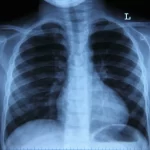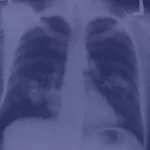Understanding Lung Cancer Due to Asbestos Exposure
Lung cancer is the leading cause of cancer-related deaths in the United States, with approximately 235,000 new cases reported annually and around 130,000 deaths, as stated by the American Cancer Society. This disease is often linked to asbestos exposure, especially among individuals who have worked in industries and settings that contain high amounts of asbestos. Understanding the types and risk factors of lung cancer, particularly in relation to asbestos exposure, is crucial for early detection and effective treatment.
Types of Lung Cancer and How It Spreads
Lung cancer comes in several forms, with the most common types being adenocarcinoma, squamous cell carcinoma, and large cell carcinoma. Adenocarcinoma typically forms in the outer parts of the lungs, while squamous cell carcinoma develops in the lining of the airways, and large cell carcinoma can occur in any part of the lung. Each of these types behaves differently, but all can pose serious health risks if not treated early.
When lung cancer spreads, it often moves to other parts of the body such as the brain, bones, liver, or lymph nodes. This process, known as metastasis, makes the disease more difficult to treat and significantly impacts the patient’s prognosis. Early detection and treatment are crucial to managing lung cancer before it spreads.
Types and Subtypes of Lung Cancer
Lung cancer begins its growth within the lungs and is broadly categorized by the type of cell: small-cell lung cancer (SCLC) and non-small-cell lung cancer (NSCLC). Additionally, a less common form known as carcinoid tumors also exists. Each type and subtype of cancerous cells has unique characteristics regarding cancer cell growth and progression.
- Small-Cell Lung Cancer (SCLC): SCLC accounts for about 10-15% of all lung cancers and is known for its rapid growth and early spread to other parts of the body. Subtypes of SCLC include:
- Small Cell Carcinoma (Oat Cell Cancer): The most common subtype of SCLC, characterized by small, oval-shaped cancer cells.
- Combined Small Cell Carcinoma: Contains a mixture of small cell carcinoma and non-small cell lung cancer
- Non-Small-Cell Lung Cancer (NSCLC): NSCLC makes up about 85-90% of lung cancer cases and generally grows and spreads more slowly than SCLC. Subtypes of NSCLC include:Adenocarcinoma: The most common type of lung cancer in both smokers and non-smokers, usually starting in the outer parts of the lungs. It is also the most common type of lung cancer in women and younger people.
- Squamous Cell Carcinoma: Typically found in the central part of the lungs, near the bronchus. It is closely associated with a history of smoking.
- Large Cell Carcinoma: This can occur in any part of the lung and this type of cell tends to grow and spread quickly, making it harder to treat.
- Carcinoid Tumors: These are rare, slow-growing tumors that can be found in the lungs and other organs. They account for less than 5% of lung cancer cases.
Asbestos Exposure and Lung Cancer Development
Exposure to asbestos fibers significantly increases the risk of developing disease. Inhaling these fibers, whether due to work-related hazards, environmental factors, or second-hand contact, can lead to their lodging in lung tissue, fostering cancerous growth over time. Asbestos fibers cause chronic inflammation and cellular damage, leading to genetic mutations and, ultimately, cancer. It's crucial for individuals with a history of asbestos exposure, especially those who smoke or used to smoke, to inform their healthcare providers about their exposure history.
Impact of Asbestos Exposure and Smoking
The risk of developing lung cancer substantially rises for individuals who both smoke and have been exposed to asbestos. Studies show that smokers exposed to asbestos face a much higher risk compared to non-smokers. Specifically, a smoker exposed to asbestos is 14.4 times more likely to develop lung cancer than a smoker without asbestos exposure. The combined effect of smoking and asbestos exposure can elevate the risk of lung cancer by 50-90 times compared to those with no history of smoking or asbestos exposure.
Symptoms and Diagnosis
Asbestos-related lung cancer symptoms may not appear until decades after initial exposure. Common signs and symptoms of lung cancer include:
- Shortness of Breath: Difficulty breathing or feeling out of breath, especially with physical activity.
- Persistent Cough: A cough that does not go away or gets worse over time.
- Coughing up Blood: Hemoptysis, or coughing up blood or rust-colored sputum.
- Chest Pain: Pain or discomfort in the chest, often aggravated by deep breathing, coughing, or laughing.
- Hoarseness: Changes in voice, becoming raspy or hoarse.
- Weight Loss: Unexplained loss of weight and loss of appetite.
- Fatigue: Persistent tiredness or weakness.
- Recurrent Infections: Frequent episodes of bronchitis or pneumonia.
- Wheezing: A whistling or squeaky sound when breathing.
Diagnosis typically involves procedures such as a lung biopsy, bronchoscopy, or thoracentesis to obtain tissue or fluid samples for microscopic examination by a pathologist. Early diagnosis is crucial for accessing appropriate treatment, including radiation therapy used to kill common cancer cells or participation in clinical trials.
Factors Affecting Lung Cancer Risk
Several factors influence the risk of asbestos-related lung cancer, including:
- Dose and Duration of Asbestos Exposure: The risk increases with higher doses and longer durations of exposure to asbestos fibers.
- Size and Shape of Asbestos Fibers: Certain types of asbestos fibers (e.g., amphibole fibers) are more dangerous due to their size and shape, which allow them to remain lodged in lung tissue more easily.
- Individual Risk Factors: Smoking, including secondhand smoke, pre-existing lung conditions (such as chronic obstructive pulmonary disease or COPD), and a family history of lung cancer can significantly elevate the risk.
- Time Since Asbestos Exposure: The risk of developing the disease remains elevated for many years after exposure, often peaking 20-30 years after the initial exposure.
Lung Cancer Screening and Diagnosis
Regular lung cancer screening is essential for early detection, particularly for individuals with known risk factors. Screening methods include:
- Low-Dose CT Scan (LDCT): A low-dose computed tomography scan completed by a healthcare professional is the most effective screening tool for detecting cancer at an early stage in high-risk individuals.
- Chest X-ray: Although less sensitive than LDCT, chest X-rays can sometimes reveal lung abnormalities that may indicate cancer.
- Sputum Cytology: A healthcare professional will examine of sputum (mucus coughed up from the lungs) under a microscope to detect cancer cells.
Diagnosis involves a combination of imaging tests and procedures to obtain a definitive diagnosis:
- Lung Biopsy: Obtaining a tissue sample from the lung to examine for cancer cells. This can be done through various methods, including needle biopsy, bronchoscopy, or surgical biopsy.
- Bronchoscopy: a procedure in which a thin tube with a camera (bronchoscope) is inserted into the lungs to collect tissue samples and examine the airways.
- Thoracentesis: removing fluid from the pleural space (the area between the lungs and the chest wall) to check for cancer cells.
- Mediastinoscopy: a surgical procedure to examine the central part of the chest and take tissue samples from lymph nodes.
Treatment Options for Lung Cancer
Treatment options depend on the type, stage, and overall health of the patient. It is important for you to discuss with your healthcare professional which treatments are right for you. Common treatment options include:
- Surgery: For early stages, surgical removal of the tumor is often the best option. Types of lung cancer surgeries include:
- Lobectomy: removal of an entire lobe of the lung.
- Pneumonectomy: removal of an entire lung.
- Segmentectomy: removal of a segment of the lung.
- Radiation Therapy: High-energy radiation therapy is used to kill cancer cells or shrink tumor size. This is often used in combination with surgery or chemotherapy.
- Chemotherapy: Use of drugs prescribed by a healthcare professional to kill cancer cells or stop their growth. Commonly used drugs include platinum-based chemotherapy agents like cisplatin and carboplatin.
- Targeted Therapy: Drugs that target specific genetic mutations or proteins in cancer cells. Examples include tyrosine kinase inhibitors (TKIs) for cancers with EGFR mutations.
- Immunotherapy: Drugs that help the immune system recognize and attack cancer cells. Immune checkpoint inhibitors, such as pembrolizumab and nivolumab, are commonly used.
- Palliative Care: Focuses on relieving symptoms and improving the quality of life for patients with advanced lung cancer. Palliative care specialists work to manage pain, breathing difficulties, and other symptoms.
Special Considerations in Lung Cancer Treatment
Treatment for lung cancer is highly individualized, taking into account the type of cancer, stage, patient’s overall health, and preferences. Factors influencing treatment decisions include:
- Type of Lung Cancer: Treatment approaches vary between SCLC and NSCLC, with NSCLC often treated with surgery, radiation, and targeted therapies, while SCLC is typically managed with chemotherapy and radiation due to its aggressive nature.
- Cancer Stage: Early-stage lung cancer may be treated with surgery alone, while advanced-stage cancer often requires a combination of treatments, including chemotherapy, radiation, and targeted therapies.
- Metastatic Disease: For metastatic lung cancer (cancer that has spread to other parts of the body), treatment focuses on controlling the disease and alleviating symptoms. Palliative therapy is crucial in these cases.
- Patient's Overall Health: Pre-existing conditions, performance status, and age influence treatment choices. A multidisciplinary healthcare team, including thoracic surgeons, oncologists, pulmonologists, and palliative care specialists, collaborates to develop the best treatment plan.
Improving Quality of Life and Support for Patients
Supportive care and improving the quality of life are critical aspects of treatment. Patients often face physical, emotional, and psychological challenges. Key components of supportive care include:
- Pain Management: Effective pain control is essential for patients experiencing cancer-related pain. Palliative care teams use a variety of medications and techniques to manage pain.
- Breathlessness Management: Shortness of breath is a common symptom. Techniques such as breathing exercises, oxygen therapy, and medications can help alleviate this symptom.
- Nutritional Support: Maintaining proper nutrition is crucial for overall health and strength. Nutritionists can provide dietary recommendations to help patients manage weight loss and maintain energy levels.
- Psychological Support: Counseling and support groups can help patients and their families cope with the emotional aspects of a lung cancer diagnosis.
- Social and Financial Support: Assistance with navigating healthcare systems, insurance coverage, and accessing financial aid can alleviate some of the burdens associated with treatment.
Current Research and Advances
Ongoing research and clinical trials are essential for developing new treatments and improving outcomes for people with lung cancer. Key areas of research include:
- New Drug Development: Research into new chemotherapy agents, targeted therapies, and immunotherapies is ongoing. Clinical trials are testing the efficacy of these new treatments in different types of lung cancer.
- Combination Therapies: Studies are exploring the benefits of combining different treatment modalities, such as chemotherapy with immunotherapy or targeted therapy with radiation, to enhance effectiveness.
- Early Detection Methods: Developing better screening tools and biomarkers for early detection. Early detection can significantly improve survival rates.
- Genetic and Molecular Research: Understanding the genetic and molecular basis of lung cancer helps identify new therapeutic targets and personalize treatment strategies.
Prevention and Public Health Initiatives
Preventing lung cancer involves reducing exposure to known risk factors. Key prevention strategies include:
- Smoking Cessation: Quitting smoking is the most effective way to reduce the risk of lung cancer. It is also important to eliminate secondhand smoke. Public health campaigns and smoking cessation programs play a critical role.
- Reducing Asbestos Exposure: Implementing and enforcing regulations to limit asbestos exposure in workplaces and the environment is crucial.
- Radon Testing and Mitigation: Radon exposure is a significant risk factor for lung cancer. Regular testing of homes and buildings and mitigating high radon levels can prevent lung cancer cases.
- Public Awareness Campaigns: Educating the public about signs of lung cancer risks, symptoms to watch for, and the importance of early screening can lead to earlier detection and better outcomes.
Conclusion
Lung cancer deaths remain a significant public health challenge, particularly in relation to asbestos exposure. Understanding the types, risk factors, symptoms, and treatment options is crucial for improving outcomes and providing effective care. Early detection through regular screening, advancements in treatment, and supportive care are essential for managing and enhancing the quality of life for lung cancer patients.
For more information and support, individuals can consult resources like the American Cancer Society, National Cancer Institute, and support groups. These organizations provide valuable information on prevention, treatment, and support for those affected by this serious disease. Continued research and public health initiatives offer hope for reducing the burden of lung cancer and improving survival rates.
















